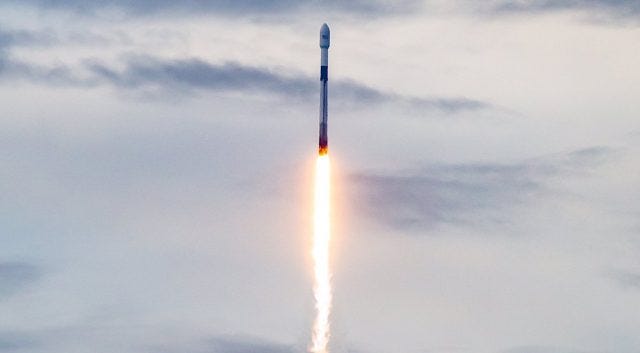SpaceX Achieves Milestone with Its 100th Rocket Launch
Written on
Chapter 1: A Historic Launch
SpaceX aimed to send off a duo of Falcon 9 rockets on Sunday, but early weather conditions posed a significant challenge to the launch. Fortunately, the skies cleared just in time, allowing SpaceX to make a remarkable achievement later in the day. The launch of the SAOCOM 1B satellite marked SpaceX’s 100th mission and represented its first polar orbit insertion from Florida—an accomplishment not seen in decades.
Initially, on Sunday, August 30th, SpaceX had to cancel its intended launch of multiple Starlink satellites. As the countdown approached for the SAOCOM mission, the situation appeared dire, yet SpaceX managed to proceed successfully. The 100th launch not only deployed the SAOCOM 1B satellite but also carried a couple of smaller rideshare payloads into orbit. SpaceX’s inaugural launch took place in March 2006, which unfortunately ended in an explosion shortly after takeoff.
The SAOCOM 1B satellite serves as an Earth observation tool, designed to capture radar imagery for first responders, environmental researchers, and more. SpaceX has successfully launched both SAOCOM 1A and 1B, placing them into polar orbits. A polar orbit involves a spacecraft passing over the planet's poles rather than orbiting closer to the equator, making it ideal for Earth observation as it enables comprehensive coverage of the planet over time.

Achieving a polar orbit demands more energy than an equatorial orbit, which is why such launches are rare from Florida. The SAOCOM 1B mission was initially slated to launch from Vandenberg Air Force Base in California, but due to delays, it was redirected to Cape Canaveral. This transition added another layer of significance to the launch, as the last occurrence of a polar orbit mission departing from Florida was in 1969 with the ESSA-9 weather satellite aboard a Delta E1 rocket.
The trajectory towards the southern polar corridor from Florida poses the risk of flying over land shortly after liftoff, which is typically avoided. For this mission, SpaceX executed a “dog-leg” maneuver to navigate around the southern part of Florida. The first stage separated before any land was approached, although the second stage briefly passed over Cuba. The 45th Space Wing confirmed that there was no risk given the second stage's altitude, and the mission successfully reached its intended orbit without any issues. The first stage also landed safely at LZ1 in Florida, marking a triumphant milestone for SpaceX’s 100th flight.
The first video titled "100 Successful Flights - YouTube" showcases the remarkable achievements SpaceX has accomplished in its journey to 100 launches, highlighting significant milestones and the evolution of its rocket technology.
The second video, "Making History: NASA and SpaceX Launch Astronauts to Space! (#LaunchAmerica Success May 30, 2020) - YouTube," captures the historic collaboration between NASA and SpaceX in launching astronauts, marking a new era in human spaceflight.